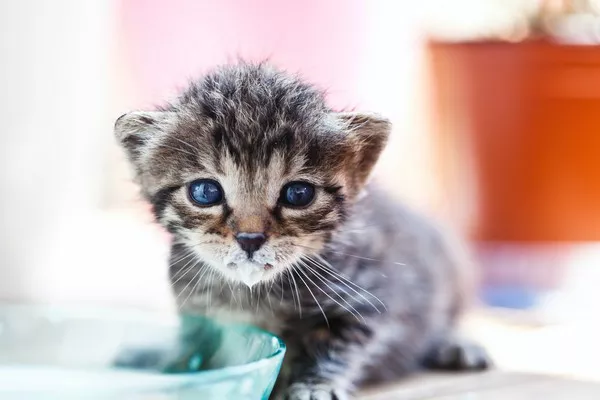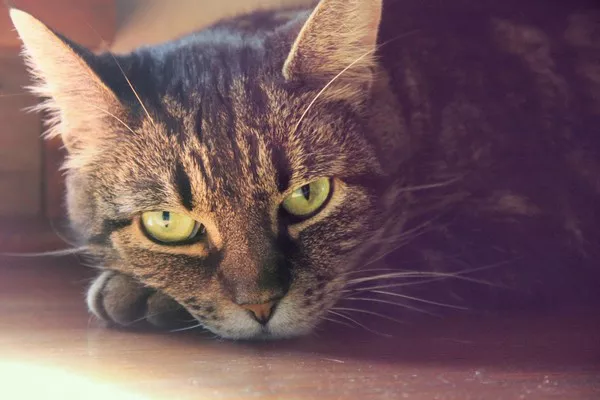Understanding the timeline and nuances of a cat’s pregnancy is vital for ensuring the health of both the mother and her upcoming litter. A typical feline pregnancy spans 63 to 65 days, divided into three trimesters, each marked by distinct developmental milestones and physical changes. While every cat’s experience is unique, recognizing key signs and providing appropriate care can help owners navigate this journey with confidence and prepare for the arrival of kittens.
The First Trimester: Subtle Beginnings (Weeks 1–3)
The earliest stage of pregnancy is often the most challenging to detect, as physical symptoms are minimal. Conception occurs within the first week, and by week 3, embryonic development is underway, though the cat’s abdomen remains unchanged. Owners may notice subtle behavioral shifts, such as brief periods of restlessness or increased affection, though these can easily be mistaken for normal mood variations. One key indicator is the cessation of heat cycles; if a previously intact female stops showing signs of estrus after mating, pregnancy is a likely possibility. However, confirming pregnancy during this stage requires veterinary expertise, as physical exams alone cannot reliably detect developing fetuses. Early veterinary visits during this period are valuable for establishing a baseline of the cat’s health and discussing prenatal care, including dietary adjustments and parasite control.
The Second Trimester: Visible Growth and Confirmation (Weeks 4–6)
By the second trimester, the cat’s body begins to reveal clear signs of pregnancy. Around week 4, the abdomen starts to expand gradually, and by week 5, owners may observe “quickening”—gentle fluttering movements as the kittens grow and become more active. The nipples also undergo changes, darkening in color and enlarging as the mammary glands prepare for milk production. This trimester is critical for veterinary confirmation of pregnancy; an ultrasound performed between weeks 4 and 5 can detect fetal heartbeats and provide an estimated count of kittens, while ruling out false pregnancies or abdominal abnormalities. Nutritional needs increase significantly during this phase, as the kittens’ organs and skeletal systems develop rapidly. Transitioning the cat to a high-quality, calorie-dense diet formulated for pregnant or nursing mothers ensures she receives adequate nutrients, such as protein and calcium, to support healthy fetal growth.
The Third Trimester: Nesting and Final Preparations (Weeks 7–9)
In the final trimester, the cat’s pregnancy becomes undeniable, with a noticeably rounded abdomen and increased behavioral changes. Nesting instincts peak in the days leading up to labor, as the cat seeks out a quiet, secure spot—such as a box lined with blankets or a secluded corner—to create a birthing nest. She may drag fabric or bedding to her chosen area and spend extended periods there, grooming herself and preparing for the kittens’ arrival. Appetite fluctuations are common: while the cat may eat more frequently to store energy for labor, she may also lose interest in food in the 24 hours before giving birth due to abdominal pressure from the kittens. Physically, the mammary glands become full and firm, and nipples may leak small droplets of colostrum, the nutrient-rich first milk. Around day 40, a veterinary X-ray can provide a clear count of kittens by visualizing their skeletons, helping owners anticipate the size of the litter and prepare necessary supplies, such as a warm birthing area and kitten care kits.
Signs of Impending Labor and Delivery
As the due date approaches, the cat exhibits distinct signs that labor is imminent. A reliable early indicator is a drop in body temperature from the normal range of 101–102°F (38.3–38.9°C) to below 100°F (37.8°C), typically occurring 12–24 hours before birth. Behaviorally, she may become restless, pacing or repeatedly visiting her nesting area, or she might seek out her owner for comfort. Physical signs include vaginal discharge, usually clear or light pink, and visible abdominal contractions that grow more intense and frequent. Once labor begins, kittens are born at intervals of 10 minutes to 1 hour, with the mother typically delivering each kitten within 2–6 hours. Owners should monitor the process closely, ensuring the mother can access food and water and that each kitten is properly cleaned and nursed. While most feline births are uneventful, veterinary assistance may be necessary if contractions stall, discharge is foul-smelling, or the mother appears distressed.
Critical Care Considerations Throughout Pregnancy
Throughout the pregnancy, veterinary care is essential to address any complications and ensure the mother’s well-being. Regular checkups allow veterinarians to monitor fetal development, screen for infections or genetic issues, and provide guidance on nutrition and stress management. Owners should also prioritize creating a calm environment, minimizing loud noises or disruptions that could cause anxiety, which may impact the pregnancy. Additionally, ensuring the cat has access to clean, comfortable bedding and avoiding overhandling her abdomen during the later stages of pregnancy help reduce stress and support a healthy outcome.
Conclusion: Nurturing Life from Conception to Birth
A cat’s pregnancy is a remarkable journey that requires patience, vigilance, and tender care. By familiarizing themselves with the signs of each trimester, seeking timely veterinary advice, and adapting care routines to the cat’s evolving needs, owners can play a crucial role in ensuring a safe and successful pregnancy. From the subtle beginnings of the first trimester to the dramatic final days of nesting, every stage is a testament to the resilience of feline mothers and the joy of welcoming new life into the world. With proper preparation and attention, this experience can be a rewarding milestone in the bond between humans and their feline companions.
Related Topic:



























